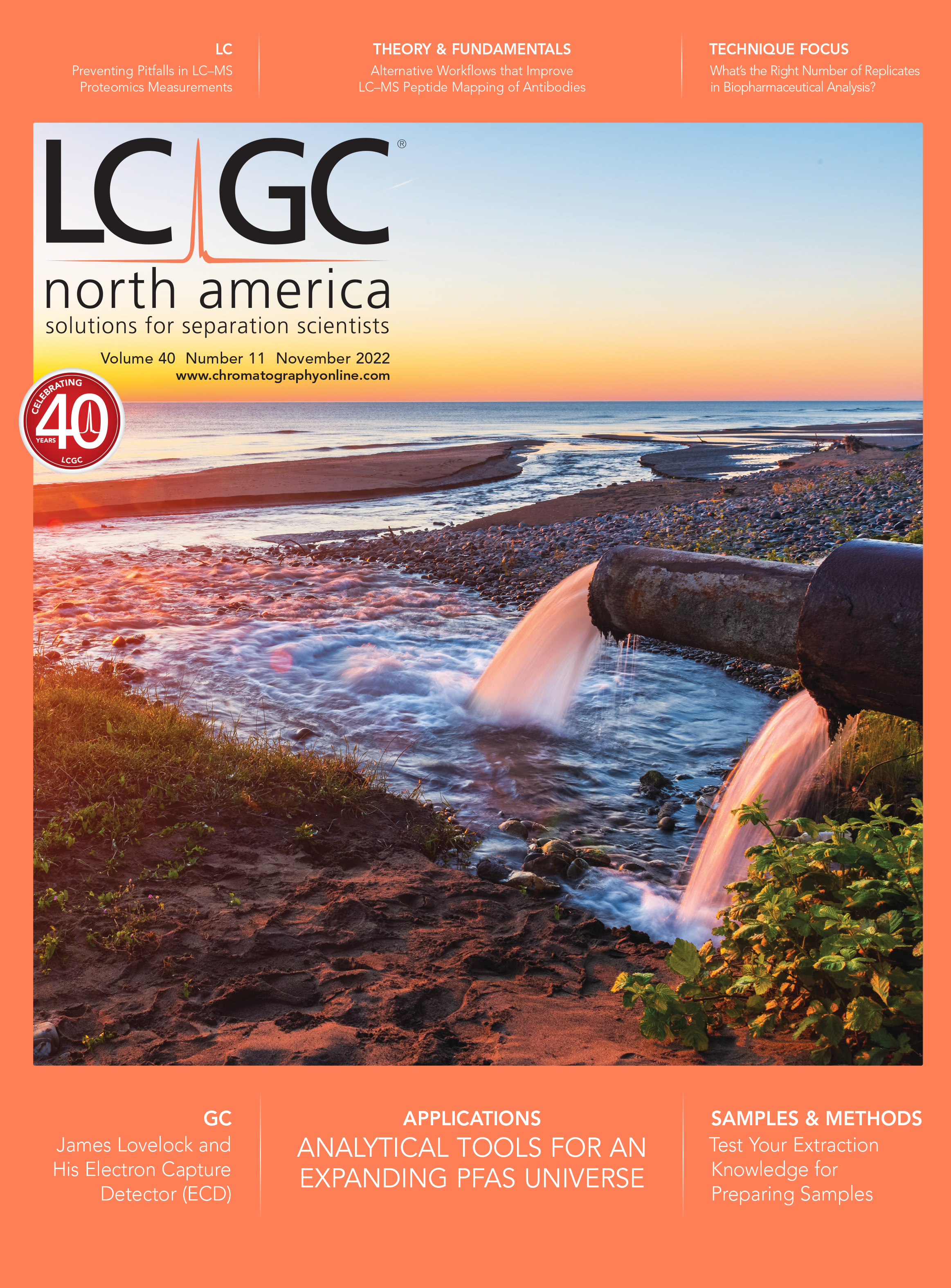Sample Preparation by Electric Field–Assisted Extraction
Extraction-based sample preparation has been recognized as a significant step in separation science. To improve the sensitivity and selectivity of the extraction, some new approaches have been introduced, including those that employ an electric field. These electric field–assisted extraction methods create another dimension for sample preparation, and are compatible with miniaturized, portable, and multifunctional analytical platlate proteins, organelles, viral capsids, and biological cells, among others.
Analytes of environmental or biological origin occur in complex matrices, which complicates their separation and detection. For this reason, sample preparation methods such as extraction are a crucial step prior to chromatographic analysis. The goals of sample preparation technologies are purification and pre-enrichment of target analytes to be separated and then detected by the instrument. Purification reduces the concentration of interfering matrix substances, which affects separation and measurement through a decrease in sensitivity and a significant increase in maintenance, loss in chromatographic efficiency, and distortion of peak shape. In addition, high-abundance species might overwhelm the column. Extraction accomplishes purification and pre-enrichment by partition of the analyte into or onto an extraction phase.
Advances in extraction seek to improve selectivity and to boost pre-enrichment of the analyte through its increased mass transport to and uptake into or onto the extraction phase. For systems in which analytes or interferents are charged, integration of electric fields normal to the phase boundary can be leveraged to improve these features of the extraction. Electric fields can be generated and modulated by a simple pair of electrodes, and are by nature a green, cost-effective, and user-friendly addition to an extraction protocol. For this reason, the use of electric fields in extraction is an important modern trend in analytical chemistry. Although many electric field–assisted separation techniques have been developed and studied in depth, such as electrodialysis, gel electrophoresis, capillary electrophoresis, and capillary electrochromatography, the use of electric fields in extraction is still an underdeveloped area.
In the context of extraction, there are three areas where an applied voltage can be employed. Electric fields can be used to drive more rapid mass transport of charged analytes to the extraction phase, as well as partition of a species with a certain charge to increase selectivity of the extraction. Further, electrosynthesis can be utilized to synthesize and prepare membranes and solid-phase sorbents for extraction. It is notable that use of an electric field to perform any of these three functions can be readily implemented in microfluidic devices to create highly integrated analytical platforms.
Using an electric field in extraction has several advantages, such as improved selectivity for transfer of ionized species, efficient matrix cleanup, and modulation of the sample preparation process for potentially exhaustive extraction of target species. Electric fields have been employed in both solid-phase and liquid–liquid extractions.
Electric fields have been employed to enhance solid-based extraction by either direct manipulation of extraction or by migration of charged species to the interface during the extraction phase or away from the interface during the elution stage. Compared to traditional solid-phase extraction, electric field-enhanced extraction provides a new dimension to separation art, making it more versatile and dynamic.
Techniques that employ non-linear (graded) electric fields for electrokinetic extraction are less developed and have the potential to access new classes of analytes and to more dramatically enhance extraction efficiency. These techniques include dielectrophoresis (DEP), for manipulation of polarizable particles (including those lacking a net charge), and electric field gradient focusing (EFGF) methods. Most prevalently, these electrokinetic methods have been integrated with biological analysis. For example, DEP has been used to selectively accumulate proteins, organelles, viral capsids, and biological cells, among others.
We have briefly summarized applications of electric fields as a means to modulate extraction. These methods enrich target analytes, improve sensitivity, and hold the potential to integrate separation and detection. These methods are broadly applicable to biological, environmental, and pharmaceutical samples. These advantages warrant further investigation into scaling and commercialization of these methods and development of new non-linear electrokinetic techniques for enrichment of polarizable particles and charged analyte prior to extraction.
Han Chen is a PhD student, and Robbyn K. Anand is an associate professor of chemistry, at Iowa State University, in Ames, Iowa. Direct correspondence to: rkanand@iastate.edu

Study Explores Thin-Film Extraction of Biogenic Amines via HPLC-MS/MS
March 27th 2025Scientists from Tabriz University and the University of Tabriz explored cellulose acetate-UiO-66-COOH as an affordable coating sorbent for thin film extraction of biogenic amines from cheese and alcohol-free beverages using HPLC-MS/MS.
Multi-Step Preparative LC–MS Workflow for Peptide Purification
March 21st 2025This article introduces a multi-step preparative purification workflow for synthetic peptides using liquid chromatography–mass spectrometry (LC–MS). The process involves optimizing separation conditions, scaling-up, fractionating, and confirming purity and recovery, using a single LC–MS system. High purity and recovery rates for synthetic peptides such as parathormone (PTH) are achieved. The method allows efficient purification and accurate confirmation of peptide synthesis and is suitable for handling complex preparative purification tasks.







